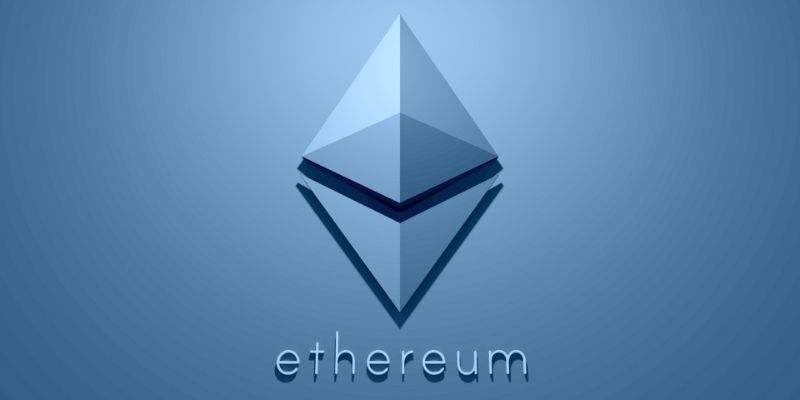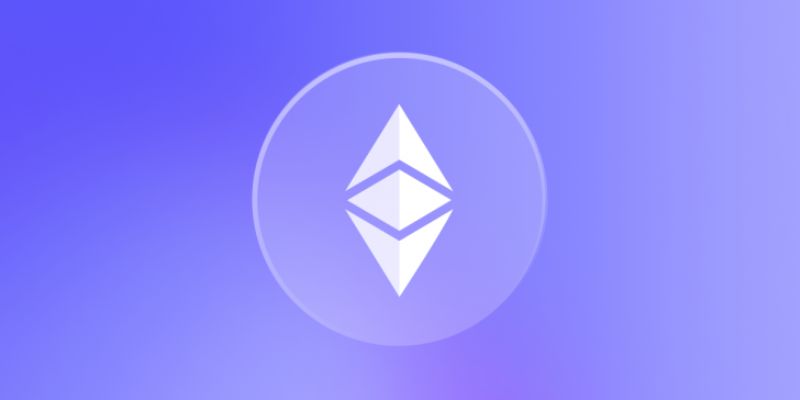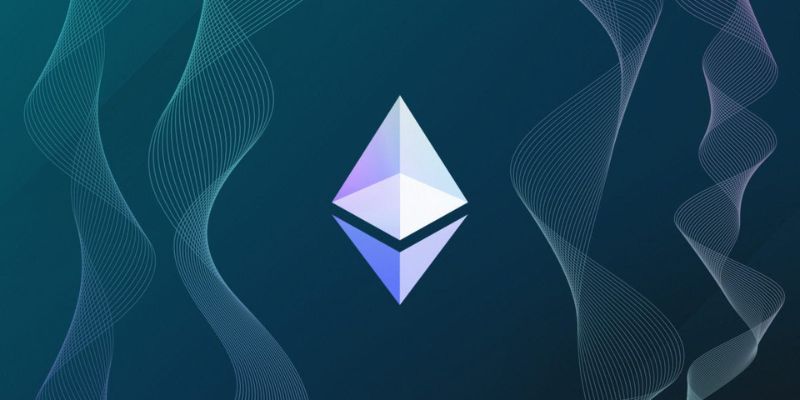What is Ethereum? It’s a game-changer, the canvas for a digital masterpiece that’s remaking our world’s financial and tech landscapes. Imagine a place where contracts self-execute and apps run without any central control – that’s Ethereum for you. By enabling smart contracts and decentralized apps, or dApps, it’s setting the stage for an incredible array of innovations. In this deep dive, we’ll decode the basics, uncover its core innovations, and explore its ambitious shift to Ethereum 2.0. Stick with me, and let’s unravel how Ethereum is pushing the boundaries of what’s possible in the digital realm.
Understanding the Basics of Ethereum
The Genesis of Ethereum and How It Reimagined Blockchain
Let’s dive deep into where Ethereum comes from. A young brain named Vitalik Buterin thought up Ethereum. He saw blockchain could do more than just track Bitcoin. In 2015, Ethereum went live. It brought a big change in how we think about blockchain.
Ethereum made it easy to create programs without bosses. These are smart contracts. They are like vending machines for any service you can think of. Put in a coin, choose a button, and get what you need. No person is needed to run it.
Imagine you’re playing a game where you can truly own your in-game stuff. That’s what dApps do. They give power back to users. They run on Ethereum’s worldwide system and change the way we use the internet.
Ether Cryptocurrency: Fueling the Network
Now, let’s figure out Ether, the gas of the Ethereum engine. Every action on Ethereum needs some Ether to work. This includes sending money and running dApps. Why? Because every move needs work, and work needs to be paid for. Ether’s job is to pay for this work.
What about the folks doing the work? They’re called miners, and they run computers to keep Ethereum safe. But there’s a shift happening. Mining is going to be a thing of the past. A new way, called proof of stake, is taking over. This means you can help run Ethereum just by holding some Ether.
The exciting part? Ethereum is leveling up. It’s getting better and faster with something called Ethereum 2.0. This upgrade makes it possible to handle more action without breaking a sweat. It’s like boosting a car’s horsepower while also making it use less gas.
In summary, Ethereum took blockchain’s main feature and ran with it. It made it possible for anyone to build new kinds of apps. It turned a ledger for tracking Bitcoin into a platform for innovation. Ether keeps the lights on, and big changes are making it greener. Welcome to the future of the internet, shaped by Ethereum.
Ethereum’s Core Innovations: Smart Contracts and dApps
Smart Contracts: The Backbone of Ethereum’s Utility
Ethereum brings a powerful feature to the table: smart contracts. These are like magic agreements that live on the blockchain. They automatically carry out actions when certain conditions are met. This means they can handle money, shares, property, or anything valuable, flawlessly and without middlemen.
What makes Ethereum’s smart contracts so special? They run on the Ethereum Virtual Machine (EVM). This is a mighty, global supercomputer made up of many connected computers. Anybody, anywhere, can use this platform for their digital tasks.
Smart contracts on Ethereum are game changers. These contracts sparked a new world of apps that are smart and trustable. A lot of folks compare Ethereum to Bitcoin. But while Bitcoin writes a simple tale of money movement, Ethereum tells an epic story of complex, program-powered deals.
Now, let’s chat about something you’ve probably heard of: gas fees in Ethereum. Think of this like the fee you pay for someone to carry out your smart contract’s orders. When the network is hustling and bustling, these fees shoot up.
Decentralized Apps (dApps): Pioneering Modern Use Cases
Ethereum doesn’t stop with smart contracts. It’s the foundation of decentralized applications, or dApps. These apps give the power back to users. You can use a dApp for finance, games, or even to buy a piece of digital art!
dApps are changing the game because they don’t have a single point of failure. They are spread out across that big supercomputer, the EVM. This means they’re resistant to many issues that typical apps face.
One exciting dApp area is non-fungible tokens (NFTs). These are unique digital treasures that you can own and trade. Ethereum has become a haven for NFTs, creating a whole new way to think about art and ownership.
Another key dApp space is DeFi on Ethereum. This stands for decentralized finance. DeFi doesn’t need banks or brokers. Instead, it relies on the trust of smart contracts. People can lend, borrow, and bank in a new, open way.
As we explore the world of Ethereum, keep an eye on the grand shift to Ethereum 2.0. This upgrade hopes to make everything quicker and cheaper. Ethereum plans to become more environmentally friendly by shifting from a world of mining to a world of staking.
The story of Ethereum is still going. Each day brings new projects and dreams on this network. Whether you’re buying digital art, playing games, or using new finance tools, Ethereum keeps introducing fresh ways to use the web. And remember, it’s not just the tech whizzes who’re in on this – it’s all of us, shaping this new future together.
Ethereum’s Transition to Ethereum 2.0
From Gas Fees to Proof of Stake: The Evolution of Ethereum
Let’s chat about gas fees in Ethereum, folks! They’re like the gas in your car, but for running Ethereum apps. They keep everything working. But, guess what? Gas prices got high, making some folks a bit worried.
Why did this happen? Well, more people wanted to use Ethereum’s blockchain. It needed an update to handle all the action! That’s where Ethereum 2.0 steps in. It’s like Ethereum’s cool makeover to stay snappy and cheap to use.
Ethereum 2.0 is a big leap from the old way of doing things. It’s changing how Ethereum agrees on transactions, making it eco-friendlier, and way faster too. This is all thanks to the magic of proof of stake (PoS), which asks users to ‘stake’ Ether as a way to keep things secure and humming along.
Before Ethereum 2.0, miners with powerful computers solved tough puzzles to validate transactions. With PoS, those who have Ether can join in to keep the network safe. It’s like getting a say in the community because you own a piece of it.
This transition not only gives a thumbs up to our planet by using less power, but it also means saying bye-bye to those pesky high gas fees. And what’s cooler is, you can earn some Ether just by helping out. That’s staking for you!
The Significance of Ethereum 2.0 for Investors and Developers
Now, if you’ve got Ether or build neat apps, you’re in luck. With Ethereum 2.0, we’re talking about opening new doors for you. It’s gonna make Ethereum stronger and let it do even more amazing stuff. Lower fees and a sturdier network mean more room for building those smart contracts and dApps everyone’s talking about.
But what’s really awesome? Ethereum 2.0 helps make sure your Ether holds its value over time. That’s key if you’re all about smart investing. You get to be part of the action, helping Ethereum shine and grow, all while making sure your piece of the pie stays yummy.
For the clever folks who create apps, Ethereum 2.0 is like a dream come true. No more scratching your head over high costs when you want to launch your latest app. You get a smoother ride with more folks able to join in on the fun.
So, in simple words, Ethereum 2.0 is a game-changer. It’s not just a tweak; it’s a whole new way for Ethereum to work its magic. With everyone buzzing about how this can change the game, it’s clear we’re stepping into a bright future. For those backing Ethereum and those making cool stuff with it, Ethereum 2.0 is like the winning ticket to a super exciting ride ahead.
Expanding the Ethereum Ecosystem
Decentralized Finance (DeFi) and Non-Fungible Tokens (NFTs): Driving Growth
Imagine a world where banks are not in charge of your money. That’s DeFi on Ethereum. Here, you can lend, borrow, and earn on your terms. All done on a network where anyone can join in. It’s finance built by people, for the people.
DeFi has changed how we think of money. Ethereum makes it work. It’s a home for projects that let us swap, save, and invest. Every action locks into smart contracts, fully automatic with no middle man.
Now, let’s talk art and collectibles but with a twist. Enter NFTs. These are one-of-a-kind digital items. Think of them as unique treasures that can be yours alone. And guess what? Ethereum is the stage where this exciting new world plays out.
Both DeFi and NFTs have blown up. They show us new ways to use our money and express our tastes. They’ve brought Ethereum’s power to folks around the globe. And they keep on bringing more people to try out this remarkable tech.
Layer 2 Solutions and the Path to Scalability
“But wait,” you might think, “if everyone jumps on Ethereum, won’t it get too busy?” Yes, that was a hitch, but here’s the cool part. Smart folks came up with Layer 2 solutions to fix that. They are like extra lanes on a highway, so more cars can go fast. These solutions let Ethereum handle lots more without slowing down or costing too much.
These new layers work right on top of the existing Ethereum road. They process deals quick and send them back to the main road, smooth and safe. It’s how we keep things running fast and keep the fees down, too.
A nice perk is that these layers still follow Ethereum’s security rules. This means we can do more without worrying about our stuff getting lost or stolen. With these tools, Ethereum is growing big and strong. It’s ready for even more people and even cooler apps to join in.
So, what we see is Ethereum growing, changing, and getting better. It’s an exciting time, with DeFi shaking up finance and NFTs making a splash. And with new solutions for staying speedy, Ethereum’s future looks shiny and bright.
We’ve walked through Ethereum’s journey, from its birth to the fuel that powers it. We’ve explored how it’s not just about sending money—you can make deals with smart contracts or build new kinds of apps called dApps. Each part creates a world where people can trust the system without needing to trust each other.
Now, we’re on the brink of a new chapter with Ethereum 2.0. This isn’t just a small step; it’s a giant leap for Ethereum. With its shift to Proof of Stake, users and creators are looking at a future with fewer costs to worry about and a system that’s even better for everyone. We’ve seen how DeFi and NFTs have started to change the game already.
To wrap it up, Ethereum is like an ever-growing city with endless potential. With every new development, from Ethereum 2.0 to Layer 2 solutions, we get closer to a future where anyone can create and trade easily and safely. As a guide in this space, I’m pumped to see where this path takes us all!
Q&A :
What Exactly is Ethereum?
Ethereum is a decentralized, open-source blockchain system that features smart contract functionality. It’s a platform for many cryptocurrencies, including Ether (ETH), its native currency. Ethereum enables developers to build and deploy decentralized applications (dApps), and it is widely known for its role in enabling digital agreements that are executed automatically when certain conditions are met.
How Does Ethereum Work?
Ethereum works by utilizing a global network of computers (nodes) to operate a blockchain that records and verifies transactions. Developers use Ethereum to create smart contracts, which are scripts that automatically execute the terms of a contract when predetermined conditions are met. These are then recorded on Ethereum’s blockchain, providing a secure and immutable ledger.
What’s the Difference Between Ethereum and Bitcoin?
While both Bitcoin and Ethereum operate on blockchain technology, they serve different purposes. Bitcoin was created as an alternative to national currencies and aspires to be a medium of exchange and a store of value. Ethereum, on the other hand, was designed to facilitate immutable, programmatic contracts, and applications via its own currency. Ethereum’s blockchain can support many types of decentralized apps beyond simple transactions.
Can Ethereum Be Used for More Than Currency?
Absolutely, Ethereum’s primary function extends beyond just being a digital currency. Its platform is designed for running smart contracts and dApps, enabling a vast array of uses, from financial tools to games to complex data management systems. Its token, Ether, is used to power these operations, acting as a fuel for the network.
What Are the Prospects of Ethereum?
The prospects of Ethereum are tied to its ability to enable decentralized finance (DeFi), supporting the creation of a multitude of projects ranging from cryptocurrencies to tokenized assets. It’s also undergoing upgrades in the form of Ethereum 2.0, which aims to improve scalability, security, and sustainability. Ethereum’s ongoing development and the growing ecosystem suggest it has a significant role to play in the future of finance and technology.



